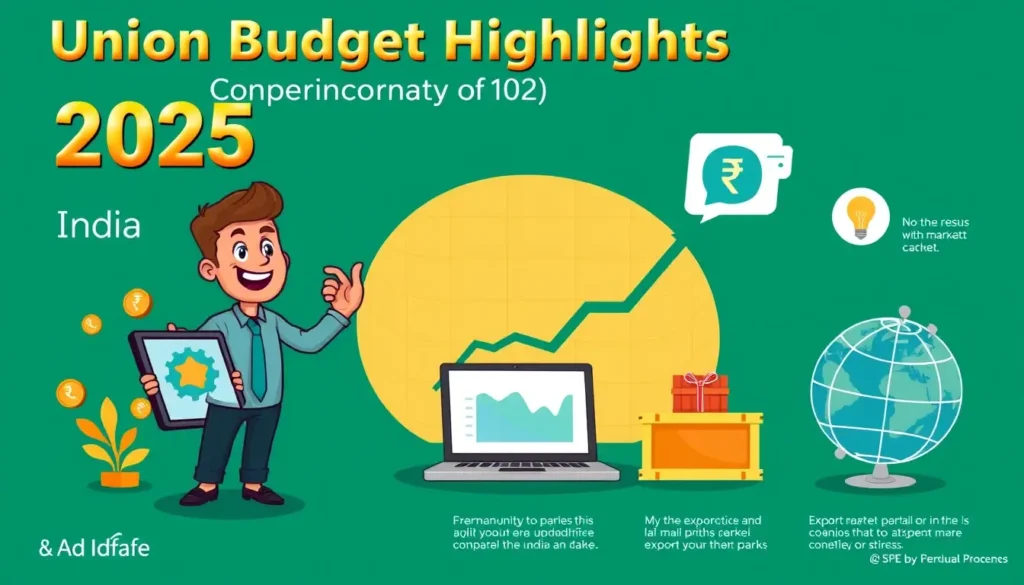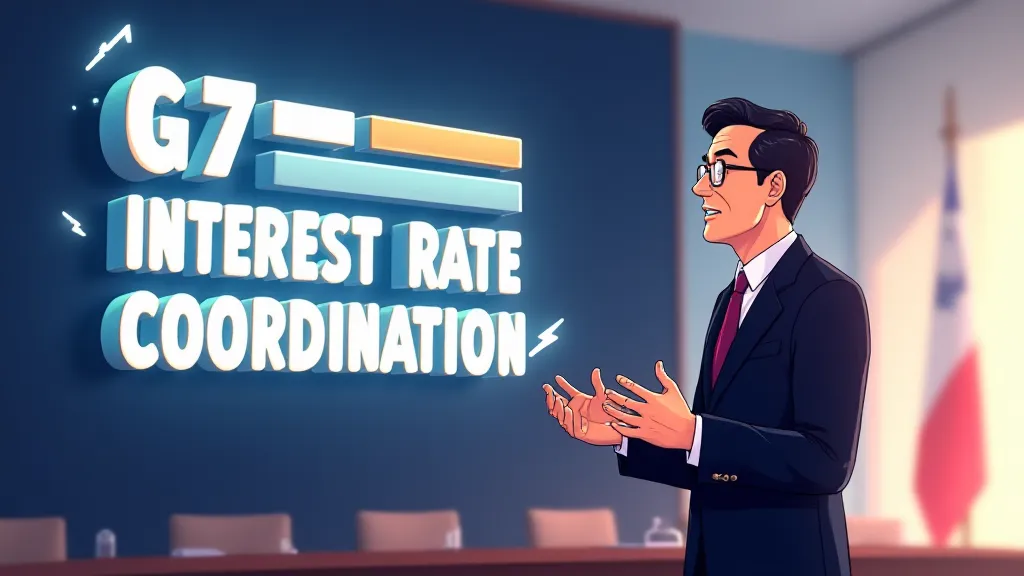
Hi friends! Welcome to this deep dive into one of the most pressing issues facing our world today—the global debt crisis. You know what? It’s not just some distant economic term; it affects jobs, prices, and stability everywhere. In this article, we’ll unpack the new debt-restructuring frameworks that policymakers are crafting to tackle this mess. We’ll explore why countries are drowning in debt, how international bodies like the G20 and IMF are stepping up, and what real-world hurdles—like Ethiopia’s stalemate—reveal about the path forward. Honestly, this matters because if debt spirals out of control, it could trigger recessions, inflation, and even social unrest. So, grab a coffee, and let’s get into the nitty-gritty of how leaders are working to prevent a full-blown crisis and what it means for you and the global economy. By the end, you’ll have a clear picture of the solutions in play and why cooperation is key.
Global debt levels have surged, prompting urgent calls for innovative debt-restructuring frameworks to avert economic collapse. Policymakers are designing multilateral systems to manage sovereign debt, emphasizing sustainability and relief for vulnerable nations. This article examines emerging mechanisms, international coordination, and implementation challenges shaping the future of financial stability.
The Escalating Global Debt Landscape: Understanding Emerging Economies Debt
Current Global Debt Statistics
Global debt has skyrocketed to unprecedented levels, with emerging economies bearing a disproportionate burden. According to World Bank data, total global debt surpassed $300 trillion in 2024, a staggering increase from previous decades. Emerging markets now account for over 40% of this debt, with countries like Argentina, Zambia, and Sri Lanka facing severe liquidity crises. The COVID-19 pandemic exacerbated this, as governments borrowed heavily to fund stimulus packages, leading to debt-to-GDP ratios exceeding 100% in many nations. This surge isn’t just a number—it translates to higher interest payments, reduced public spending on health and education, and increased vulnerability to economic shocks. The urgency of addressing this debt overload cannot be overstated, as it threatens to derail development and ignite social instability across vulnerable regions. Historically, debt crises have recurred every few decades, but the current scale is unique due to the interplay of pandemic fallout, rising interest rates, and climate-related pressures.
Debt Sustainability and Vulnerability Indicators
Debt sustainability analyses reveal that over 60 low-income countries are at high risk of debt distress, with indicators like foreign reserve coverage and export earnings deteriorating rapidly. The International Monetary Fund (IMF) uses metrics such as debt-to-exports ratios and fiscal deficits to assess sustainability, and many emerging economies are flashing red signals. For instance, Ghana’s debt service costs now consume over 50% of government revenue, crowding out essential investments. Factors like currency depreciation, commodity price volatility, and weak institutional capacity amplify these risks. Global debt tops G20 agenda, South African central bank chief says, highlighting how this issue has climbed to the top of international priorities. Compared to the Latin American debt crisis of the 1980s, today’s scenario is more complex due to diverse creditor bases, including China and private bondholders.
Historical Context and Uniqueness of the Current Crisis
Past debt crises, such as the 1990s Asian financial meltdown, were largely regional, but today’s predicament is truly global, affecting economies from Africa to Latin America. What sets this apart is the diversity of creditors—bilateral lenders like China, multilateral institutions, and private investors—complicating resolution efforts. Additionally, climate change adds a new dimension, as countries face the dual burden of repaying debt and funding green transitions. The rapid rise in interest rates by central banks to combat inflation has further strained borrowers, making refinancing costly. Lessons from history show that delayed action can lead to prolonged recessions, but the current frameworks aim to be more proactive. G7 and G20 in the World Market: A Comprehensive Overview for NASDAQ:NFLX underscores the pivotal role of international cooperation in shaping responses. This crisis demands innovative solutions beyond traditional austerity, focusing on growth-oriented restructuring.
Emerging Debt-Restructuring Frameworks: A New Approach for Sovereign Debt Restructuring
Framework Architecture and Stakeholder Roles
The new debt-restructuring frameworks are designed to be more systematic and inclusive, moving away from ad-hoc negotiations. Key components include standardized processes for debt sustainability analyses, coordinated by the IMF, and multilateral working groups that bring together bilateral creditors, private bondholders, and borrowing nations. These frameworks emphasize transparency, with clear timelines and criteria for relief eligibility. For instance, the Common Framework for Debt Treatments beyond the DSSI (Debt Service Suspension Initiative) provides a platform for G20 creditors to negotiate collectively. Stakeholder roles are clearly defined: the IMF handles technical assessments, the World Bank offers development support, and creditor committees facilitate dialogue. By establishing predictable procedures, these frameworks aim to reduce uncertainty and accelerate resolutions, preventing the prolonged stalemates that characterized past crises. Implementation involves phased approaches, starting with debt moratoriums and progressing to haircuts or maturity extensions based on need.
Implementation Mechanisms and Coordination Processes
Implementation relies on robust coordination mechanisms, such as the Global Sovereign Debt Roundtable, which fosters dialogue between creditors and debtors. Processes include early warning systems to identify distress signals, followed by structured negotiations that prioritize critical sectors like healthcare and infrastructure. The frameworks also incorporate climate-linked debt clauses, allowing pauses in payments during natural disasters. Coordination is enhanced through digital platforms that track debt data in real-time, reducing information asymmetry. For example, the IMF’s Catastrophe Containment and Relief Trust provides grants for debt service relief during emergencies. These mechanisms ensure that restructuring isn’t just about cutting debt but also about fostering long-term growth through investment-friendly terms. The involvement of regional bodies, like the African Union, adds local context, making solutions more tailored and effective.

Timeline Expectations and Phase Approach
Timelines for these frameworks are structured in phases to ensure orderly implementation. Phase one involves rapid assessments and temporary relief, such as the G20’s Debt Service Suspension Initiative, which provided breathing space for low-income countries. Phase two focuses on comprehensive restructuring negotiations, aiming for agreements within 6-12 months, compared to years in the past. Phase three includes monitoring and adjustment, with periodic reviews to ensure sustainability. The entire process is projected to take 18-24 months for most cases, though complexities may extend this. Expectations are tempered by real-world delays, but the phased approach allows for flexibility and learning from initial cases like Zambia’s ongoing restructuring. This method aims to balance urgency with thoroughness, avoiding rushed deals that could lead to relapse into distress.
International Cooperation: G20 and IMF Leadership in G20 Debt Initiatives
G20 Leadership Role and Initiative Specifics
The G20 has emerged as a central player in global debt resolution, leveraging its political clout to coordinate major economies. Initiatives like the Common Framework aim to provide debt treatments for up to 73 eligible countries, focusing on transparency and comparable treatment of all creditors. The G20 also champions the Debt Service Suspension Initiative (DSSI), which deferred billions in debt payments during the pandemic. Specifics include setting up technical working groups to analyze country cases and recommending relief measures based on IMF assessments. This leadership is crucial because it bridges divides between traditional Western creditors and emerging lenders like China, fostering a unified approach to prevent free-rider problems. The G20’s focus on including private sector engagement ensures that bondholders contribute fairly, reducing the burden on public funds. Recent summits have emphasized scaling up these efforts, with commitments to enhance framework effectiveness through regular reviews.

IMF Technical Contributions and Strategy Development
The IMF contributes technical expertise through debt sustainability analyses (DSAs) that inform restructuring terms. Its strategies include the Integrated Policy Framework, which helps countries balance debt management with growth objectives. The IMF also provides financial support via programs like the Extended Fund Facility, which comes with conditions aimed at restoring fiscal health. Additionally, the IMF promotes capacity building, training officials in debt management and negotiation skills. Its role in certifying sustainability assessments adds credibility, encouraging creditor participation. The strategy development involves close collaboration with the World Bank and regional development banks to align debt relief with long-term development goals. This holistic approach ensures that restructuring isn’t just about balance sheets but about enabling sustainable recovery and resilience.
Major Power Cooperation and Implementation Challenges
Cooperation between major powers, particularly the US and China, is pivotal for success. US, China still committed to global debt efforts, IMF strategy chief says, highlighting their bilateral commitment despite geopolitical tensions. However, challenges include differing views on debt transparency and relief terms, with China preferring bilateral deals and the US advocating for multilateral oversight. Implementation is also hampered by capacity gaps in borrowing countries and legal complexities from diverse creditor jurisdictions. To address this, the G20 is working on standardizing clauses in debt contracts to streamline processes. The involvement of other economies like India and Brazil adds diversity but requires careful negotiation to align interests. Despite hurdles, this cooperation is essential for global financial stability, as isolated actions could worsen fragmentation.
Implementation Challenges: The Ethiopia Case Study in Debt Relief Programs
Case Study Introduction and Background Context
Ethiopia’s debt restructuring saga serves as a critical real-world test for the new frameworks. The country, with over $30 billion in external debt, sought relief under the G20 Common Framework in 2021 after pandemic-related economic strains. Ethiopia’s debt restructuring hits impasse, bondholders eye legal action, revealing the hurdles in implementation. Background factors include Ethiopia’s rapid borrowing for infrastructure projects, coupled with civil conflict and drought, pushing its debt sustainability to critical levels. The government engaged with creditors including China, Eurobond holders, and multilateral institutions, but negotiations stalled due to disagreements on haircut sizes and conditionality. This case highlights how even with a framework in place, political and economic complexities can derail progress, underscoring the need for adaptable and resilient mechanisms.
Negotiation Breakdown Analysis and Stakeholder Perspectives
The breakdown in Ethiopia’s negotiations stemmed from creditor coordination failures and divergent interests. Private bondholders resisted deep haircuts, fearing precedents for other emerging market debts, while bilateral creditors like China sought more favorable terms tied to strategic assets. The government faced pressure to maintain social spending, limiting its flexibility. Stakeholder perspectives varied: the IMF pushed for reforms to improve fiscal discipline, but local groups argued this could exacerbate poverty. This impasse demonstrates that without trust and shared incentives, even well-designed frameworks can falter, emphasizing the importance of building consensus early in the process. Legal threats from bondholders added another layer, as they considered litigation under international law, potentially scaring off future investors. The case shows that frameworks must include dispute resolution mechanisms to avoid such standoffs.
Broader Implications and Framework Adaptation Needs
Ethiopia’s experience has broader implications for other countries like Zambia and Sri Lanka, indicating that frameworks need better creditor engagement strategies and faster decision-making. Adaptations could include clearer timelines for responses, incentives for private sector participation, and integration of humanitarian clauses for conflict-affected nations. The case also underscores the role of independent mediators to facilitate talks and the need for digital tools to enhance transparency. Learning from this, policymakers are considering revisions to the Common Framework to reduce bottlenecks, such as standardizing debt audit processes. Ultimately, Ethiopia’s story is a wake-up call that implementation must be as robust as design, with continuous feedback loops to refine approaches based on emerging challenges.
Comparative Analysis: Current vs. Proposed Frameworks and the Financial Stability Board
Comparison Methodology and Evaluation Criteria
To assess the evolution of debt-restructuring frameworks, we compare current ad-hoc approaches with proposed multilateral systems using criteria like speed, transparency, and stakeholder acceptance. Current methods often involve fragmented bilateral negotiations, leading to delays and unequal burden-sharing, whereas proposed frameworks emphasize coordinated, rule-based processes. Evaluation metrics include time to agreement, reduction in debt stocks, and post-restructuring growth rates. The Financial Stability Board’s role in monitoring systemic risks adds a layer of oversight, ensuring that frameworks contribute to global financial stability. This analysis draws on historical data from cases like Greece’s bailout and emerging examples from the Common Framework, highlighting how proposed systems aim to learn from past mistakes. By standardizing evaluations, we can identify best practices and avoid the pitfalls that plagued earlier initiatives.
| Framework Aspect | Current Approach | Proposed Framework | Key Improvements |
|---|---|---|---|
| Creditor Coordination | Bilateral negotiations | Multilateral working groups | Enhanced transparency and faster consensus |
| Debt Sustainability Analysis | IMF-only assessment | Multi-institution review | Broader consensus and reduced bias |
| Implementation Timeline | Case-by-case | Standardized phases | Predictable process and reduced delays |
Future Outlook and Policy Recommendations for Debt Sustainability
Short-Term Priorities and Immediate Actions
In the short term, priorities include finalizing pending restructurings for countries like Zambia and Sri Lanka, and scaling up the Common Framework to cover more nations. Immediate actions involve enhancing creditor coordination through regular G20-led meetings and providing bridge financing via the IMF’s Resilience and Sustainability Trust. Policymakers should also focus on data transparency, mandating public debt disclosures to build trust. Additionally, emergency measures like temporary debt standstills can prevent defaults during crises. Accelerating these steps is vital to restore confidence and prevent a wave of defaults that could trigger global contagion. The Financial Stability Board’s monitoring can help identify emerging risks, allowing preemptive interventions. Collaboration with credit rating agencies is also key to ensure that relief efforts don’t unfairly penalize countries with downgrades.
Long-Term Framework Development and Institutional Strengthening
Long-term, the focus should be on institutionalizing debt-restructuring frameworks into permanent global financial architecture. This includes establishing a sovereign debt resolution mechanism under UN or IMF auspices, with binding arbitration for disputes. Policy recommendations involve integrating climate and SDG goals into debt terms, using tools like debt-for-nature swaps. Strengthening local debt management capacities through training and technology transfers will empower countries to avoid future crises. The role of the Financial Stability Board should expand to include early warning systems for debt sustainability. By embedding these frameworks into international law, we can create a more resilient system that anticipates rather than reacts to crises. Success indicators include reduced frequency of debt distress episodes and improved economic growth in emerging economies.
FAQs: financial stability board
Q: What are the key components of new debt-restructuring frameworks?
Q: How does the G20 contribute to global debt resolution?
Q: What challenges are emerging in framework implementation?
Q: How do new frameworks improve upon previous approaches?
Q: What role does the IMF play in debt restructuring?
In conclusion, the global debt crisis demands urgent and coordinated action through innovative debt-restructuring frameworks. While challenges like Ethiopia’s impasse highlight implementation gaps, the progress in G20 and IMF initiatives offers hope. By learning from case studies and strengthening international cooperation, we can build a more resilient financial system that promotes sustainable growth and stability for all nations. The path forward requires commitment, adaptability, and a shared vision for a debt-free future.







